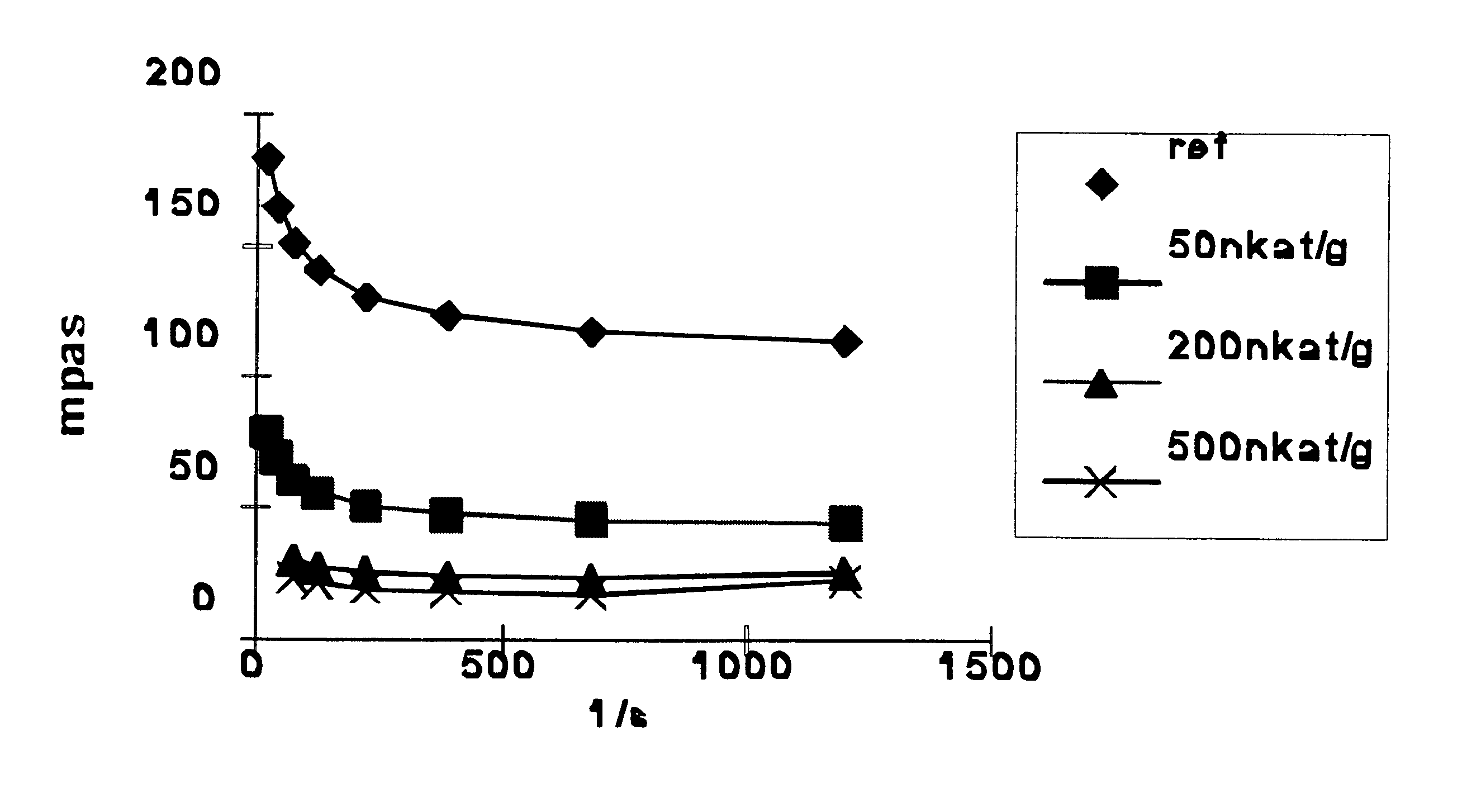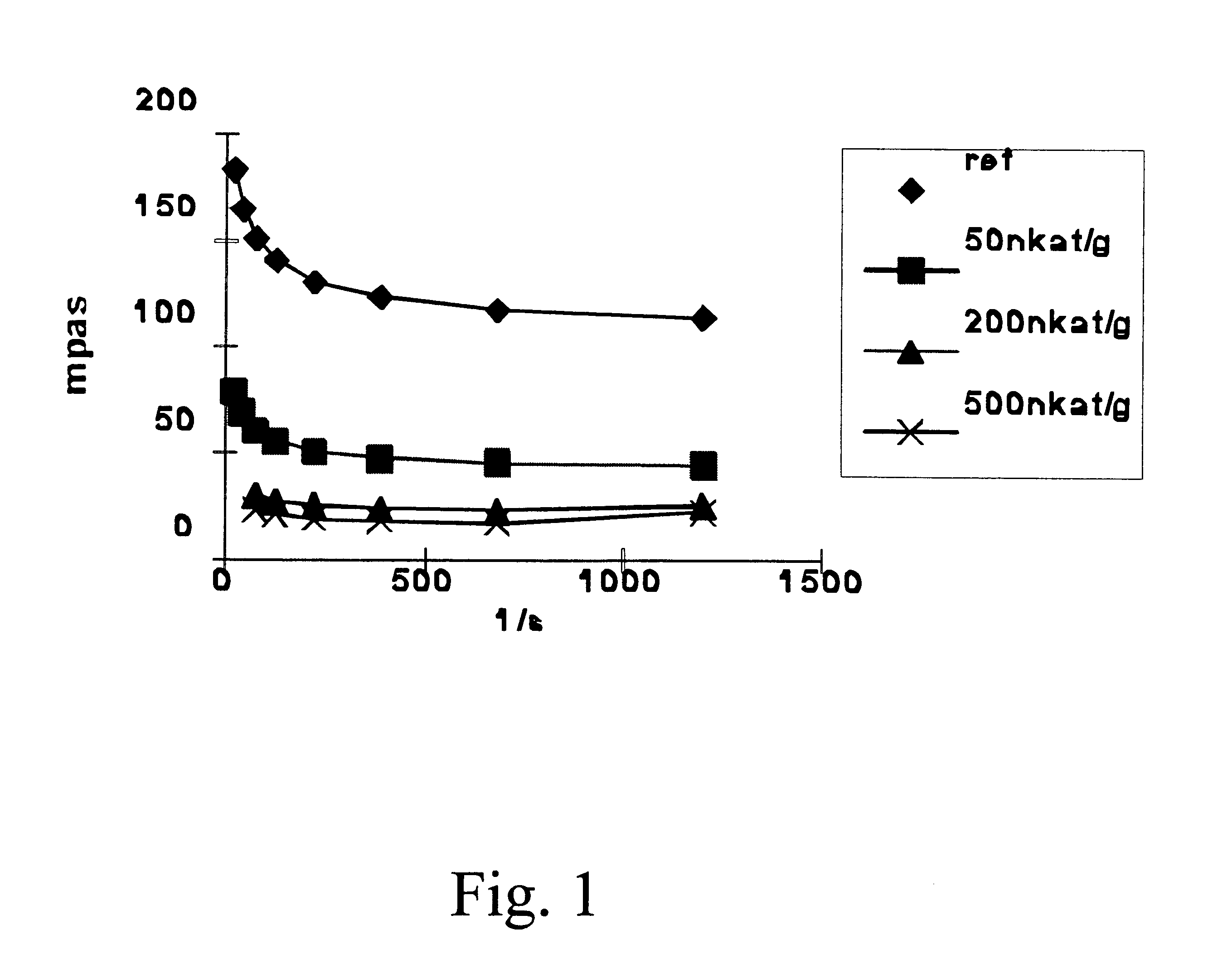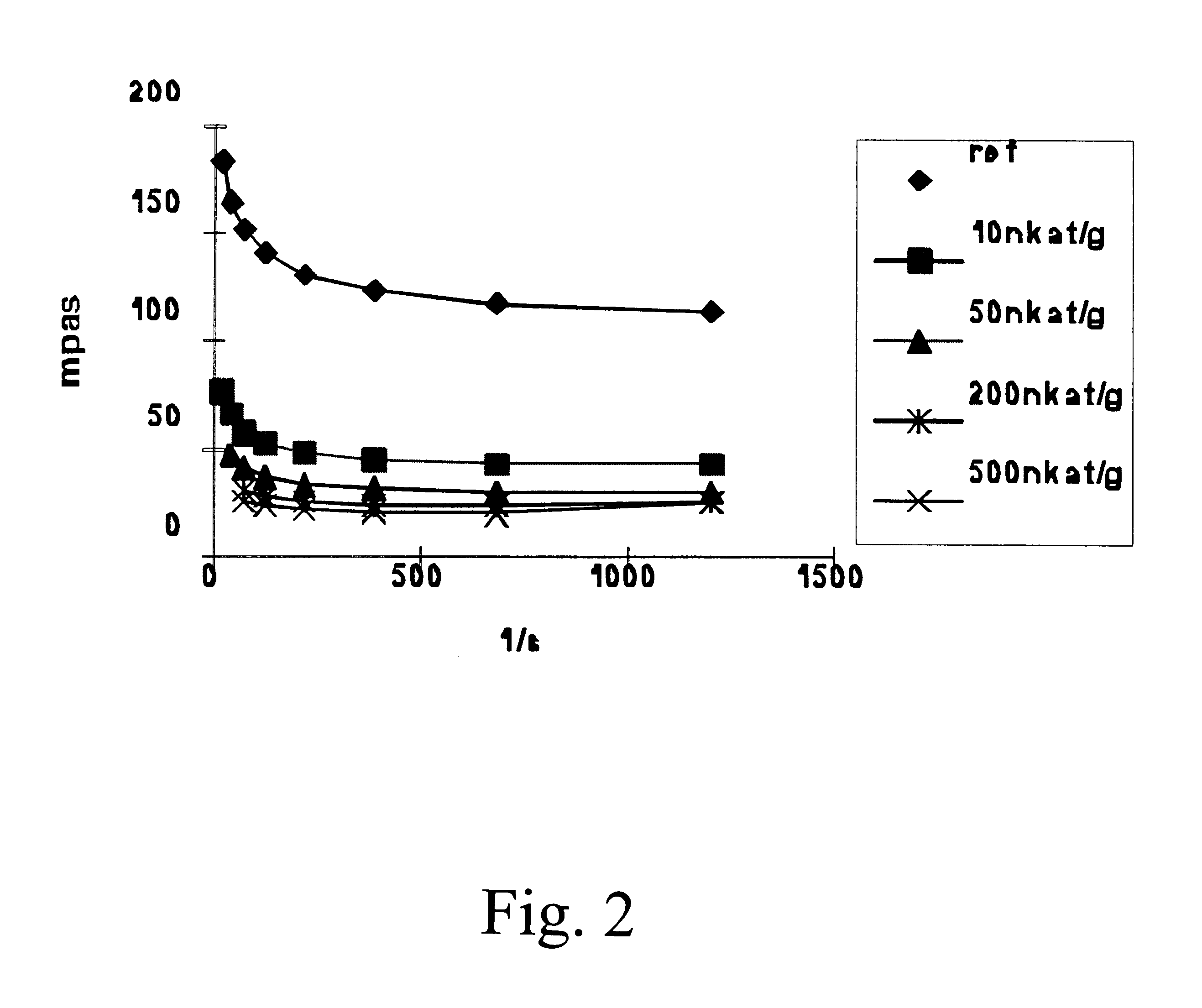Process for concentrating soluble and colloidal substances in process waters
a technology of process water and colloidal substance, which is applied in the direction of pulp liquor regeneration, multi-stage water/sewage treatment, biological water/sewage treatment, etc., can solve the problems of not being able to continue concentration, not being able to economically burn concentrate, and not being able to solve the problem of process water concentration
- Summary
- Abstract
- Description
- Claims
- Application Information
AI Technical Summary
Benefits of technology
Problems solved by technology
Method used
Image
Examples
example 1
Composition of Process Water of TMP Pulp
The chemical composition of the dry matter of process water used in thermomechanical pulping (TMP) of softwood was as follows:
The composition of the carbohydrate fraction was as follows:
example 2
Treatment of Concentrated TMP Water with Mannanase
The dry content of TMP water concentrated by evaporation was 37% and the pH 5.8. The concentrate was treated with mannanase produced by the Trichoderma reesei mould (RUT-C-30) by using an enzyme dosage of 50-500 nkat / g per dry matter of the concentrate by slightly agitating (150 rpm) at 30.degree. C. for 2 hours. A reference sample was incubated without the enzyme. After incubation, the viscosity was immediately measured with a Bohlin Visco 88 BV viscosimeter (Bohlin Reologi AB, Sweden) at various rotation velocities. The volume of the sample was 17 ml and the measuring head of the device C30.
The measuring temperature varied within 23.4-24.5.degree. C. On the smallest enzyme dosage, 50 nkat / g, the viscosity decreased to less than half of the original, and on a dosage of 200 nkat / g to one fifth (25 M Pas) (FIG. 1).
example 3
Treatment of Concentrated TMP Water with Endoglucanase I
In accordance with Example 1, TMP concentrate was treated with an endoglucanase I preparation (EG I) produced by the Trichoderma reesei mould. EG I was efficient in reducing the viscosity. As small an amount as 50 nkat / g of endoglucanase reduced the viscosity to one fourth (29 M Pas) (FIG. 2).
PUM
| Property | Measurement | Unit |
|---|---|---|
| Fraction | aaaaa | aaaaa |
| Fraction | aaaaa | aaaaa |
| Fraction | aaaaa | aaaaa |
Abstract
Description
Claims
Application Information
 Login to View More
Login to View More - R&D
- Intellectual Property
- Life Sciences
- Materials
- Tech Scout
- Unparalleled Data Quality
- Higher Quality Content
- 60% Fewer Hallucinations
Browse by: Latest US Patents, China's latest patents, Technical Efficacy Thesaurus, Application Domain, Technology Topic, Popular Technical Reports.
© 2025 PatSnap. All rights reserved.Legal|Privacy policy|Modern Slavery Act Transparency Statement|Sitemap|About US| Contact US: help@patsnap.com



